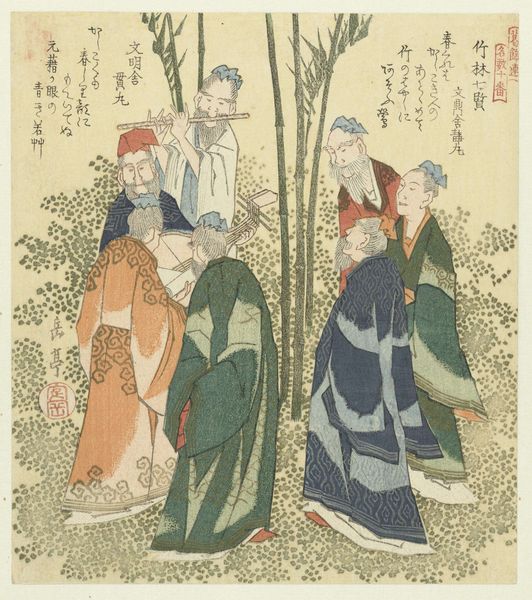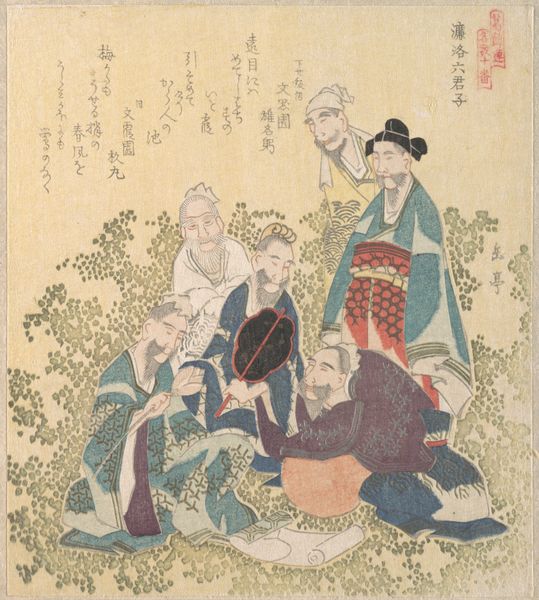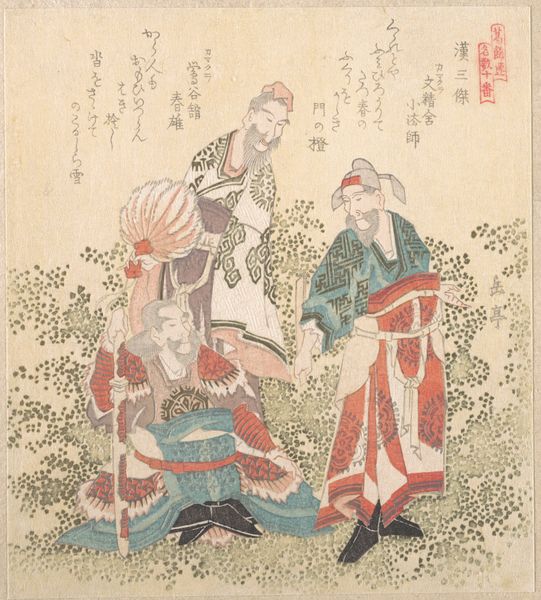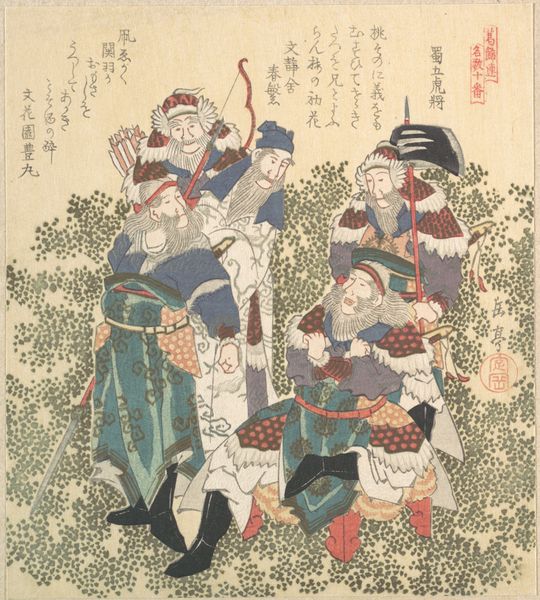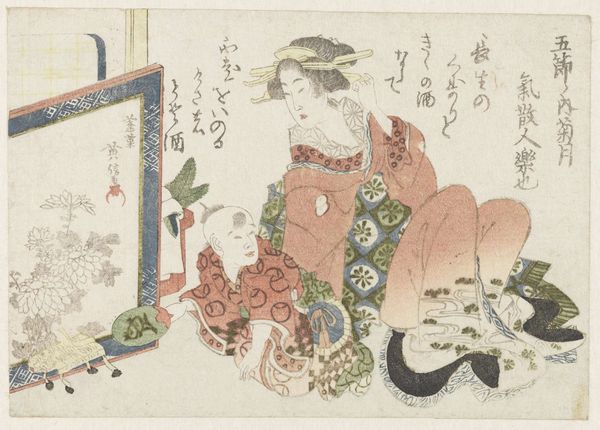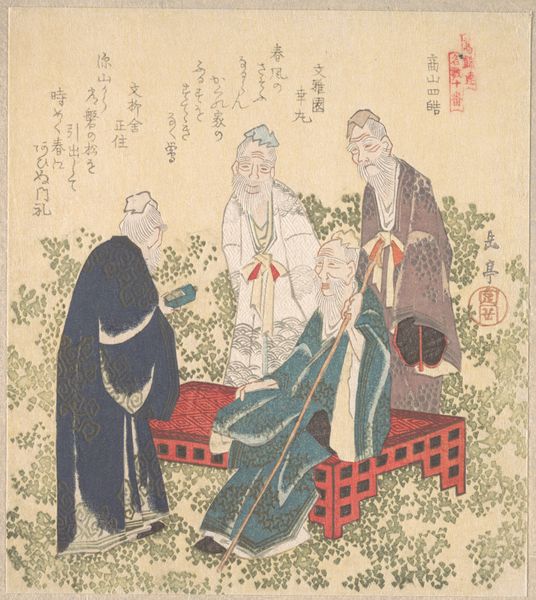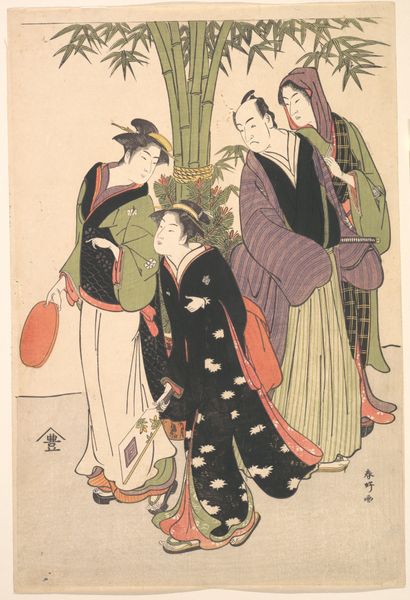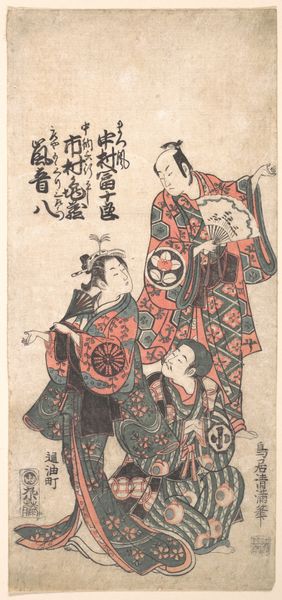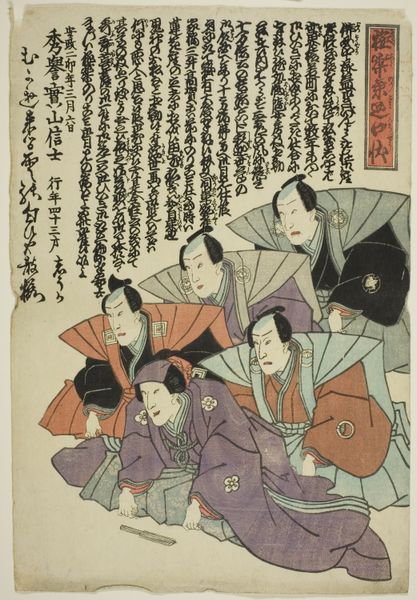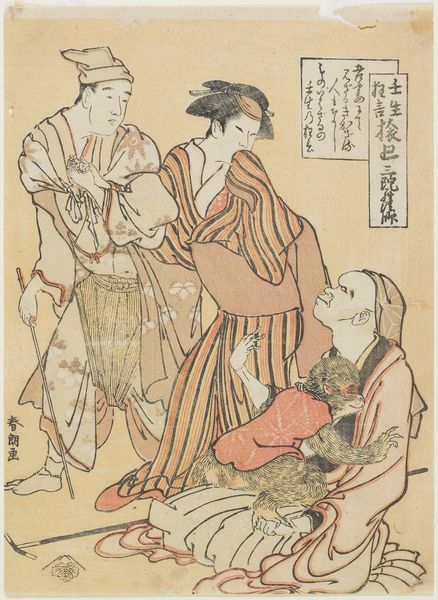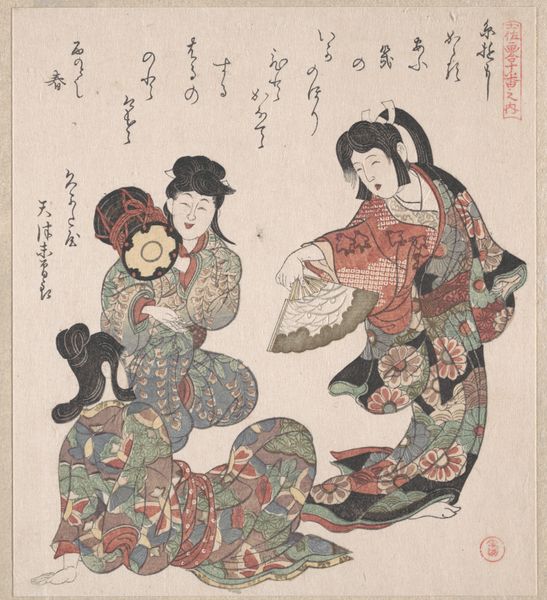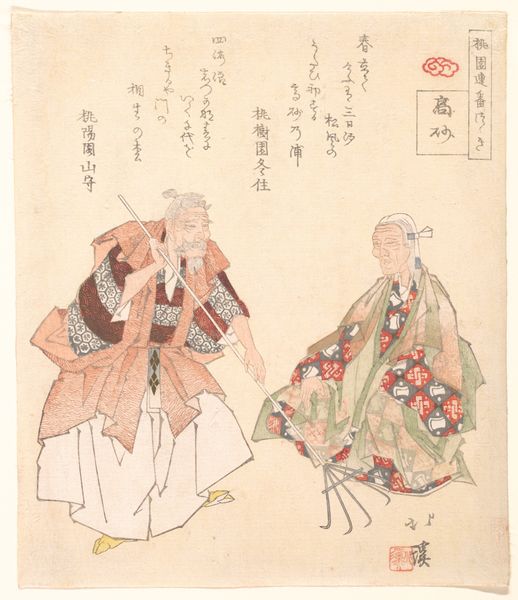
print, woodblock-print
#
portrait
# print
#
asian-art
#
ukiyo-e
#
woodblock-print
#
genre-painting
#
watercolor
Dimensions: height 210 mm, width 187 mm
Copyright: Rijks Museum: Open Domain
Curator: Yashima Gakutei's woodblock print, “Nine Old Men from Kōzan,” circa 1822, captures a moment of leisure. I'm curious about your immediate reaction to it. Editor: It's rather intimate, isn't it? A cluster of wise-looking gentlemen, heads bent together. There's a feeling of quiet contemplation, maybe even a hint of mischievous camaraderie amidst the seriousness. The hazy foliage backdrop is also an unusual approach to setting the space in a world known for crisp lines. Curator: Gakutei, as a prominent Ukiyo-e artist, often explored scenes of everyday life. The choice of elderly men, presumably scholars or perhaps even mythical figures given the possible "Kōzan" title reference to a place with sacred and or legendary qualities, lends itself to interpretations related to wisdom, tradition, and societal values within the context of the Edo period. I think that that might also point to power, the seat of power, and who wields it in the story of society. Editor: Absolutely. Their robes, the attention to the facial details and expressive poses...it elevates this gathering beyond a simple genre scene. One cannot ignore that the robes conceal more than they reveal. I’d also like to consider how this reflects prevailing gender norms and social power structures. Were women involved in the arts in Japan, and how might the absence of the feminine here mean something more? Curator: The materiality, as you'd pointed out, plays a critical role, also. The woodblock printing technique itself—the way colors are layered, the texture created—speaks to the democratization of art during that era, allowing for broader dissemination of images and ideas among different societal classes. So the printing becomes an act of distribution of a power. Editor: It's also interesting to think about how an image like this might be seen today, especially considering discussions about aging populations, respect for elders, and the often fraught relationship between tradition and modernity. What narratives can it offer now that challenge our present understanding? Curator: It presents such rich insight that offers us an occasion to examine both historical values and our own evolving perspectives on privilege and visibility, I believe. Editor: Agreed. It's a powerful reminder of how art, even from centuries past, can continue to ignite critical dialogue in our contemporary world.
Comments
No comments
Be the first to comment and join the conversation on the ultimate creative platform.
